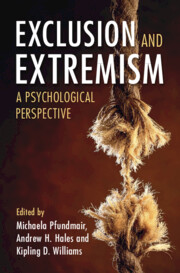Part II - Drivers of the Exclusion–Extremism Link
Published online by Cambridge University Press: 16 May 2024
Summary

- Type
- Chapter
- Information
- Exclusion and ExtremismA Psychological Perspective, pp. 121 - 236Publisher: Cambridge University PressPrint publication year: 2024

